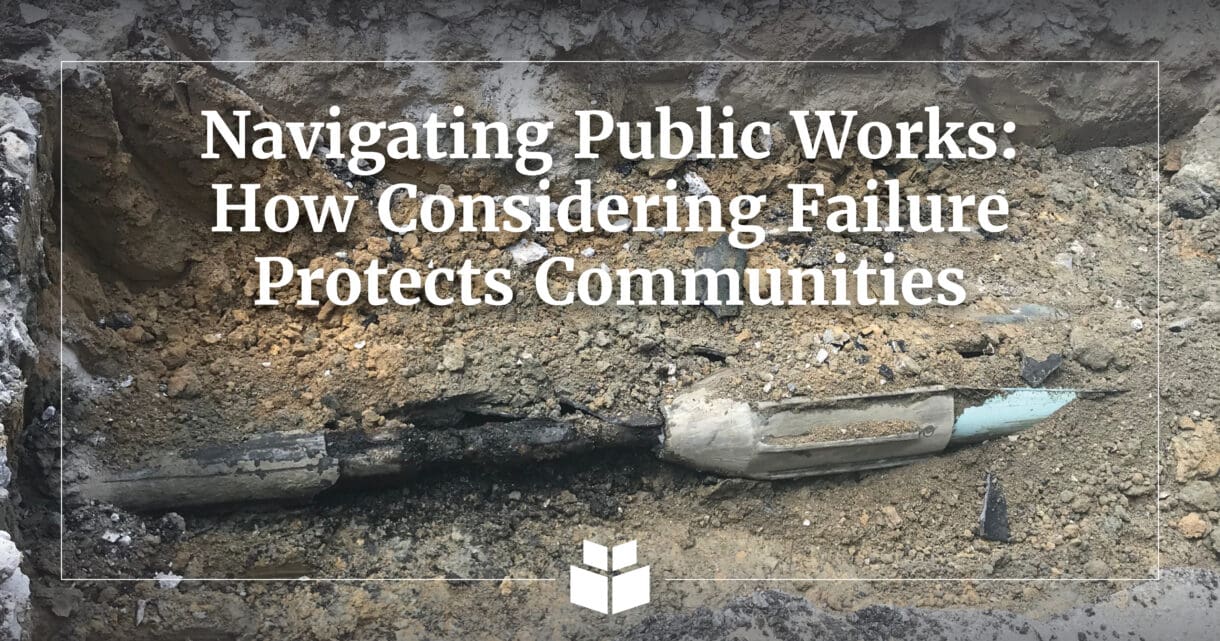
What happens if I do this—or what happens if I don’t?
When it comes to prioritizing infrastructure projects, public works professionals often evaluate two critical factors: the Likelihood of Failure (LoF) and the Consequences of Failure (CoF). While the idea of failure can sound ominous, especially to local government officials, it’s actually a valuable tool for better planning, risk management, and decision-making.
The likelihood of failure refers to the probability that a system, component, process, or asset will fail to perform as intended. Consider, for example, a water line approaching 100 years old. It’s leaking, has leaded joints, and is clearly nearing the end of its useful life. The LoF for this line is significantly higher than that of a recently installed ductile iron pipe.
Equally important are the consequences of failure. What happens if that water line breaks? Will residents lose access to safe drinking water? Will roads be closed for emergency repairs, disrupting transportation? Is there a backup water source available? These are critical considerations when assessing the overall impact of infrastructure failure, not just for utilities, but across all areas of public works.
As we’ve discussed in previous articles on communication between public works professionals and elected officials, addressing failure is fundamentally about understanding your community and clearly articulating needs. Demonstrating LoF and CoF through cause-and-effect comparisons, such as charts, graphs, and lifecycle models, can help stakeholders visualize what’s at stake. This evidence-based approach not only empowers public works teams but also equips elected leaders to explain and justify infrastructure decisions to the public.
For example, a council member facing public resistance to tax increases might hesitate to support costly infrastructure upgrades. However, a more experienced official may recognize that delaying action could lead to greater costs and disruptions down the line. When public works professionals can clearly show how proactive investments today prevent larger failures tomorrow, they help build consensus and trust.
Town of Cary Mayor Harold Weinbrecht offers this advice on navigating difficult decisions: “Don’t be pennywise and pound foolish,” he says. “Think about your decisions. ‘I’m doing this for your best interest.’ As long as the elected official can explain that, then they can get their answer across.”
By embracing the concepts of likelihood and consequence of failure, public works professionals can transform the conversation around infrastructure investment. Rather than avoiding the topic of failure, they can use it as a strategic framework to guide smarter decisions, minimize long-term risks, and enhance community resilience. With clear data, effective communication, and a shared commitment to public well-being, local governments can move from reactive fixes to proactive planning, building stronger, more reliable systems for generations to come.
